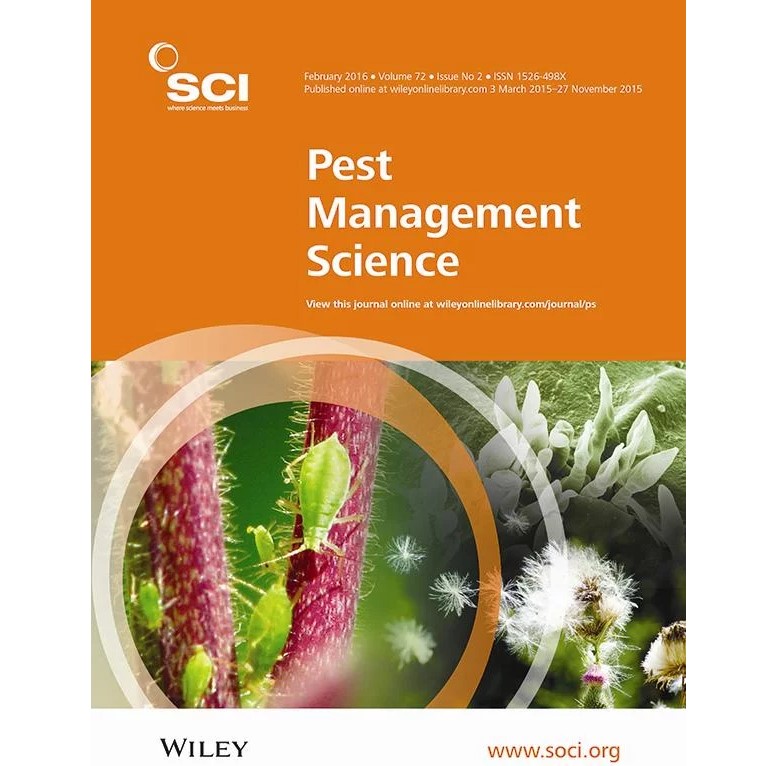Ver ítem
- xmlui.general.dspace_homeCentros Regionales y EEAsCentro Regional Buenos Aires SurEEA Hilario AscasubiArtículos científicosxmlui.ArtifactBrowser.ItemViewer.trail
- Inicio
- Centros Regionales y EEAs
- Centro Regional Buenos Aires Sur
- EEA Hilario Ascasubi
- Artículos científicos
- Ver ítem
Broad resistance to acetohydroxyacid-synthase-inhibiting herbicides in feral radish (Raphanus sativus L.) populations from Argentina
Resumen
BACKGROUND:
Soon after the commercial release of sunflower cultivars resistant to imidazolinone herbicides, several uncontrolled feral radish (Raphanus sativus L.) populations were found in south-eastern Buenos Aires, Argentina. These populations were studied in field, glasshouse and laboratory experiments aiming to characterise their resistance profile and to develop management tools.
RESULTS:
Three feral radish accessions were highly resistant to ten
[ver mas...]
BACKGROUND:
Soon after the commercial release of sunflower cultivars resistant to imidazolinone herbicides, several uncontrolled feral radish (Raphanus sativus L.) populations were found in south-eastern Buenos Aires, Argentina. These populations were studied in field, glasshouse and laboratory experiments aiming to characterise their resistance profile and to develop management tools.
RESULTS:
Three feral radish accessions were highly resistant to ten active ingredients of five families of acetohydroxyacid synthase (AHAS)-inhibiting herbicides. Sequence analysis of the AHAS gene detected a Trp574Leu mutation in all resistant accessions. One accession with an intermediate level of resistance was heterozygous for this mutation, probably owing to gene exchange with a susceptible subpopulation located in the field margin. Herbicide-resistant and herbicide-susceptible radish could be controlled in sunflower by alternative herbicides.
CONCLUSION:
This is the first report of feral radish with resistance to herbicides belonging to all the AHAS-inhibiting herbicide families, conferred by Trp574Leu mutation in the AHAS gene. An appropriate herbicide rotation with alternative herbicides such as fluorochloridone or aclonifen and an increase in the diversity of cropping systems are important for minimising the prevalence of these biotypes.
[Cerrar]

Autor
Pandolfo, Claudio Ezequiel;
Presotto, Alejandro Daniel;
Moreno, Florencia;
Dossou, Ida;
Migasso, Juan P.;
Sakima, Ernesto;
Cantamutto, Miguel Angel;
Fuente
Pest management science 72 (2) : 354-361. (2016 Feb)
Fecha
2016-02
ISSN
1526-4998
Formato
pdf
Tipo de documento
artículo
Palabras Claves
Derechos de acceso
Embargado
 Excepto donde se diga explicitamente, este item se publica bajo la siguiente descripción: Creative Commons Attribution-NonCommercial-ShareAlike 2.5 Unported (CC BY-NC-SA 2.5)
Excepto donde se diga explicitamente, este item se publica bajo la siguiente descripción: Creative Commons Attribution-NonCommercial-ShareAlike 2.5 Unported (CC BY-NC-SA 2.5)

